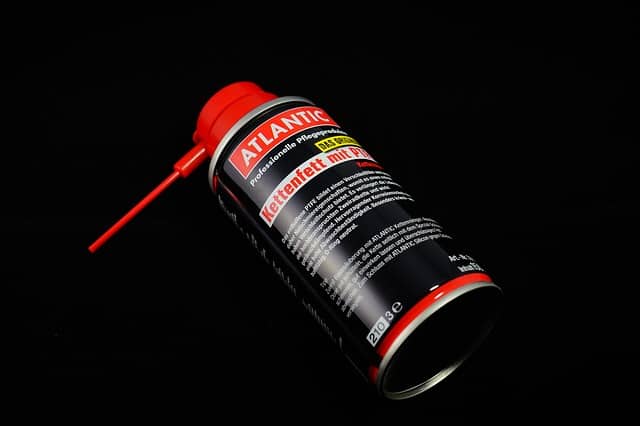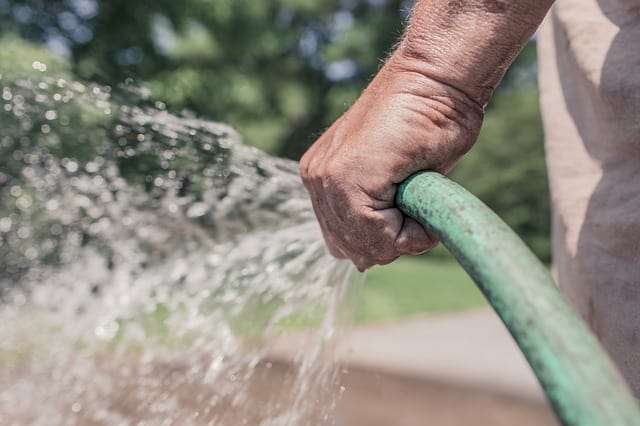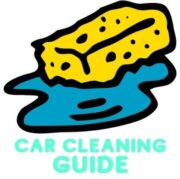Last Updated on July 21, 2023 by Chase Manhattan
The engine bay of the car is often overlooked. Many people like washing their car regularly but they don’t pay attention to what’s under the hood. A car can look nice and shiny but be a disaster under the hood. The engine bay is not directly exposed to dirt but some dirt particles manage to get through. So, cleaning the engine bay once in a while is a good practice. Anything that includes the engine can be scary but we are here to learn.
Here is a guide on how to clean the engine bay of your car:
- Choose a sunny day and cool your engine.
- Disconnect the battery terminals.
- Cover sensitive electrical components with plastic.
- Add degreaser
- Scrub with a microfiber cloth
- Rinse with a garden hose or pressure washer
- Dry
As you can see, it’s not that complicated. Cleaning the engine bay may sound scary but it’s nothing dangerous if you are being careful while maintaining your vehicle. A thorough step-by-step guide follows:
Quick Navigation
How To Clean Your Car’s Engine Bay
1. Pick The Day

First of all, you can’t just clean your engine bay any day you want. Cold days, especially during the winter are a big no. You can’t really damage the engine by cleaning the bay but you want the water to dry as fast as possible. That’s why a sunny warm day is the best time possible for cleaning an engine bay. This allows for the accumulated moisture to dry completely and quickly.
This is something you plan ahead, not a spur of the moment endeavor. So, follow the weather forecast, and pick a sunny day. Also, make sure you are doing this during the daylight hours, not during the nighttime.
Also, choose a well-ventilated area. Make sure that you have plenty of working room. You don’t want debris to get into the engine bay while you are scrubbing.
One more thing, the engine should be cooled down. Cleaning your engine should only be done after you’ve let the engine cool. Warm engines and cold water do not mix well, you can damage the engine if you are doing this with a hot engine; it will not expedite the cooling process at all.
[How To Clean A Catalytic Converter]2. Disconnect The Battery
Start by removing the terminals and moving them safely out of the way. This is a must. The electrical parts of the car are the only thing that can be damaged while you are washing the car.
We all know what happens when water comes in contact with a live current. You can easily avoid all of this by removing the negative terminal. This will make sure that there’s no current running through the electrical parts.
Now, if this scared you, then just remove the entire unit from the vehicle. By doing this you are completely eliminating any possibilities of damaging electrical parts.
Removing the battery is relatively easy. Just remove the terminals, then unscrew the straps that are keeping the battery in place. If you are having trouble with it, find a video tutorial for removing a battery, look for your car model though.
[Why You Should Use a Car Cover in Winter]Optional: Protect Sensitive Electrical Components With Plastic Bags
Even if you took out the terminals in step one, some components are still exposed to damage. The ignition wires, the control unit, etc… all can be damaged if they come in contact with excess water.
A droplet here and there probably won’t do anything, but something will get messed up if you spray too much water. You can protect these sensitive parts by covering them with plastic bags. The reason this is optional is that if you are careful, this is not really necessary.
So, if you think that you can be extra careful while scrubbing and rinsing, then don’t bother covering the parts. But if you want to be careful, cover the electrical parts and the air intake if it’s open to water penetration.
[How To Clean O2 Sensor In Your Car]3. Apply A Degreaser Product

I have seen people using all kinds of degreaser products. Household items are also okay. But I must recommend an Engine Degreaser Spray, something like WD-40. For other chemicals that are more general purpose, I recommend something like simple green.
You can also go with something natural. If you are up for buying a specific product, I recommend that you go with an engine cleaner. With a product like this, you can’t go wrong. More so, it’s specifically made for engines, so it will do wonders.
Apply the spray throughout the engine compartments. You can apply the spray freely here while avoiding the air filter. You can’t really damage anything with the degreaser. Chances are, there will be a lot of dirt and grime in the bay, especially if you have debris filled engine bay.
[Washing the Undercarriage of A Car: Dummy’s Guide]
4. Scrub With A Microfiber Towel
Once you are done with the degreaser, you need to start scrubbing. My advice is, to start wiping in one direction. Get that surface dirt out of the way. Do not scrub or make circles right away.
Just wipe. If your engine bay is not that dirty, after the wiping, it will look good enough. It’s okay to scrub with the towel but this is best done once you get rid of the surface dirt. Once you are left with only the hard-to-get rid of dirt, you can start scrubbing. This way, you won’t have to reapply the degreaser to the clean parts, just the really dirty parts.
First, try scrubbing with the microfiber towel. If this is not effective, try using fiber brushes instead. Don’t use a wire brush of any sort. You want something softer that won’t scratch the entire engine bay. Feel free to apply the degreaser several times on the dirt that you can’t get rid of.
[How To Clean Purge Solenoid Valve]5. Rinse With Water

Now, you have to get rid of the degreaser. You will do that by spraying the engine compartments with a garden hose. Some people recommend a pressure washer here but I don’t agree.
It’s okay if the washer has a low-pressure setting. But this low-pressure differs from the washer to washer. So, what you may think is okay, may not be low enough. Pressure washers can be too powerful for the engine. A water hose is the safest way here.
Carefully, and thoroughly, rinse the entire engine bay. Do not spray over sensitive electrical components like the engine control unit (ECU). Water will splash, of course, but the real danger is with direct contact with the sprayed water. Go easy on parts that are not directly exposed to sunlight. These will take more time to dry, so excess water won’t do any good.
Rinsing With A Pressure Washer
Should you decide to rinse the engine bay with a pressure washer, be sure to avoid directly spraying any sensitive components. Also, be sure to maintain a safe distance so that the water pressure does not break plastic, chip paint, or intrude into problematic areas.
6. Let The Engine Bay Dry
The sun will do its job but you will have to help a bit. Get microfiber cloths and wipe away the leftover water. Wipe only on parts that you can access.
Don’t go out of your way to wipe all the nooks and crannies. You can use compressed air but make sure it’s set on low. If you have have a leaf blower, this is also an effective option to completely dry the engine compartment.
Do not start your car just yet though, allow for at least an hour to pass, just to make sure.
[How Often To Change Your Car’s Air Filter]Cleaning Your Engine Bay Without Water
It’s relatively easy to clean your engine bay without water. Here are the steps to cleaning your engine bay without water:
- apply degreaser from a spray bottle
- wipe gently with a clean microfiber cloth or a brush with soft bristles
- wipe up the exposed surfaces like metal parts and plastic coverings with a microfiber towel
This method is best when you already have a relatively clean engine bay. If there is dry debris, or dirt and grime, stuck to the entire area, it may be best to follow the “How To Clean Engine Bay With Water” process.
[Why Driving With A Bad Purge Valve Is A Bad Idea]
Additional Cleaning Tips
- Get as many microfiber cloths as you can. It’s best to wipe with a clean towel. Dirty towels will only make your job harder, other debris particles will stick to the engine bay again. This is a must if you have never cleaned the engine bay before.
- If you don’t have a garden hose nor a pressure washer, consider going to a self-serve car wash with a low pressure spray. You can find one of these things there.
- You can add some warm water to the stuck dirt. Don’t just scrub too hard, it’s easier to get rid of loose debris.
- If you are a messy worker, use rubber gloves. Also, use safety glasses while applying the degreaser and while rinsing.
- Use rubber bands to make sure that the plastic covers do not fall off.
- You can liven up the metal surfaces of the engine compartments with wax or a dedicated engine protectant.
- Use a non-corrosive product to avoid damaging the rubber components.
- Use non hazardous substances to make sure the engine components stay safe.
Related Questions And Other FAQs
Can You Clean Your Engine With WD-40
Yes, you can use WD-40 to clean your car engine safely. WD-40 is an engine degreaser spray, so it won’t cause any damage. Apply the spray and leave it on for 3-5 minutes before scrubbing.
Is It Safe To Spray Your Engine With Water
It depends on what you will be spraying and what you will be using to spray. Spraying the your car’s engine with water is okay as long as you avoid directly spraying into exposed electrical parts. It’s best to spray with a water hose or spray bottle. If you are using a power washer, set it on low water pressure.
Can I Wash My Engine While It’s Hot
Absolutely not, you should only clean your engine bay when you’ve allowed your car engine to cool completely. If there are hot surfaces everywhere, it will be more difficult to perform a thorough cleaning. Additionally, if a hot engine comes in contact with cold water, a process called rapid contraction happens.


